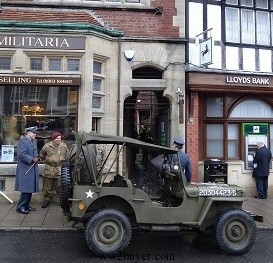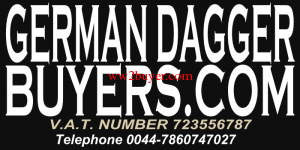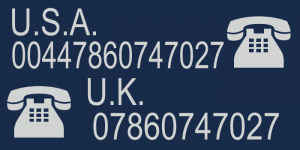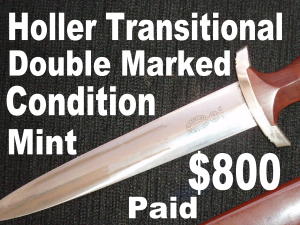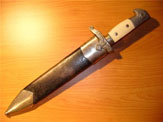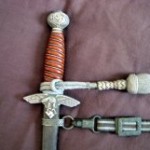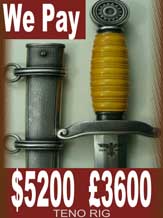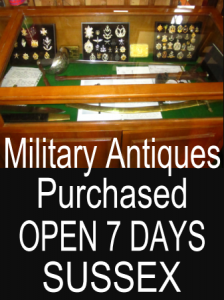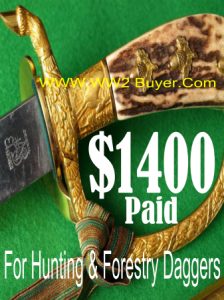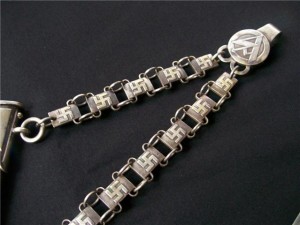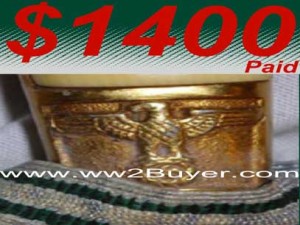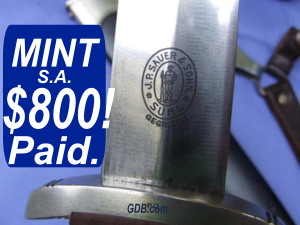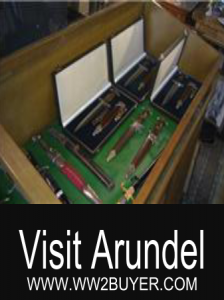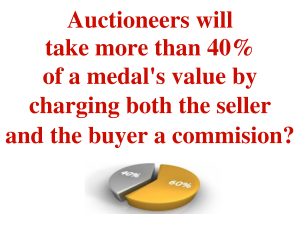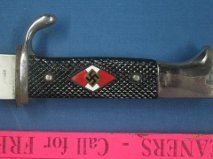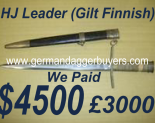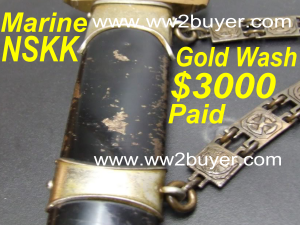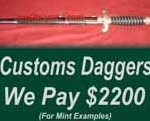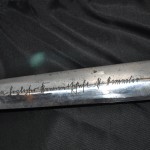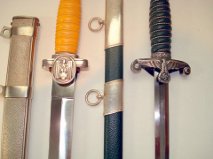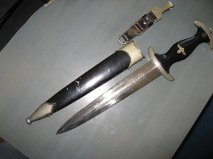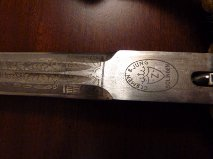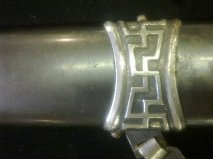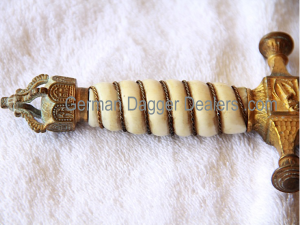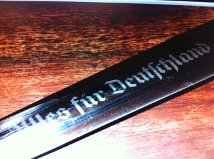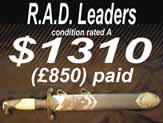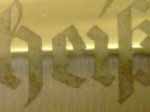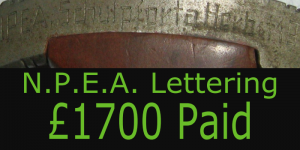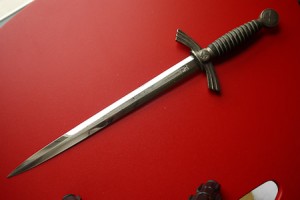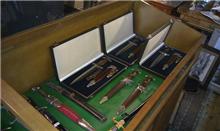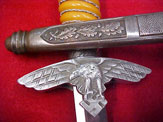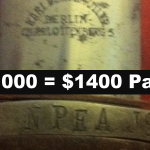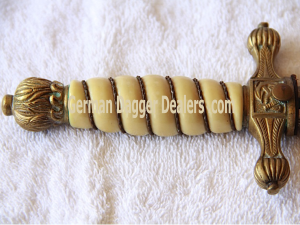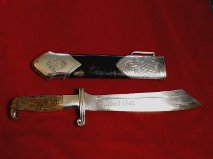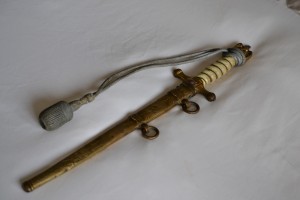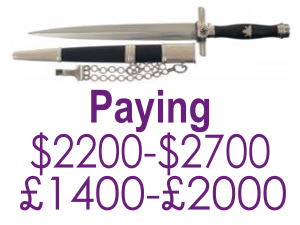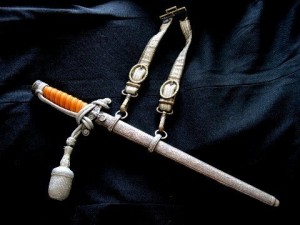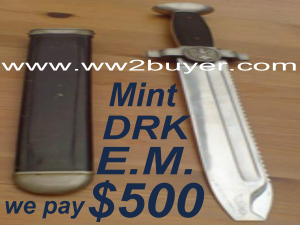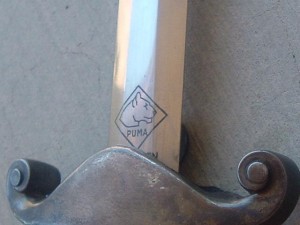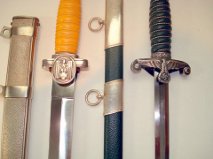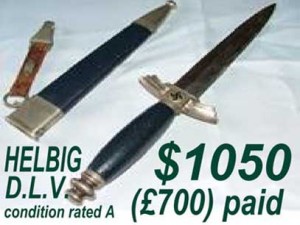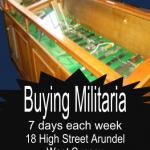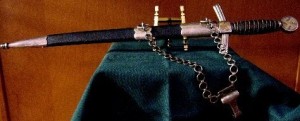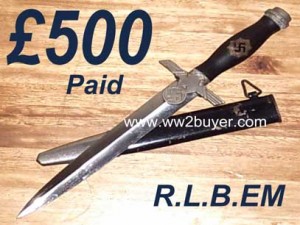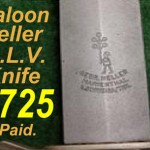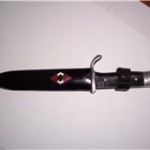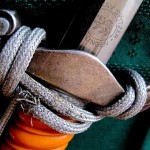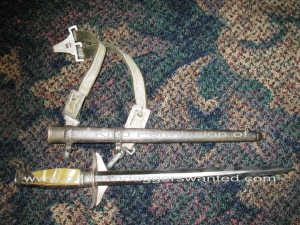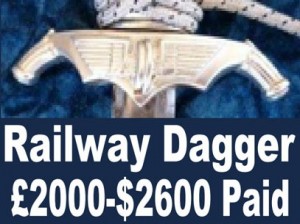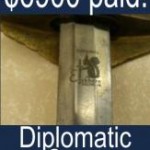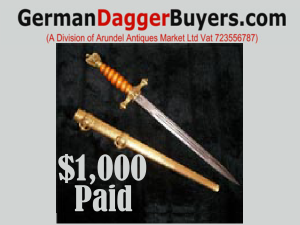 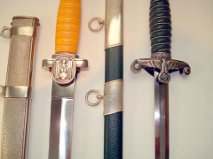 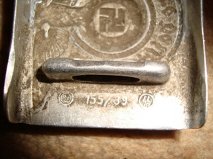 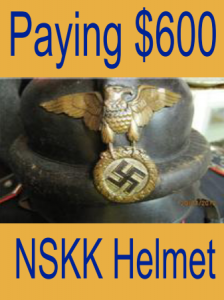 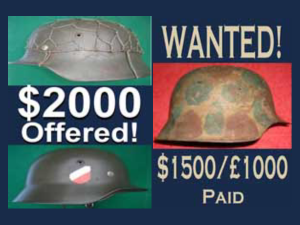 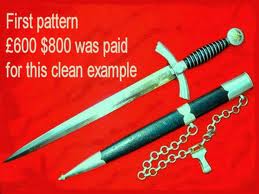   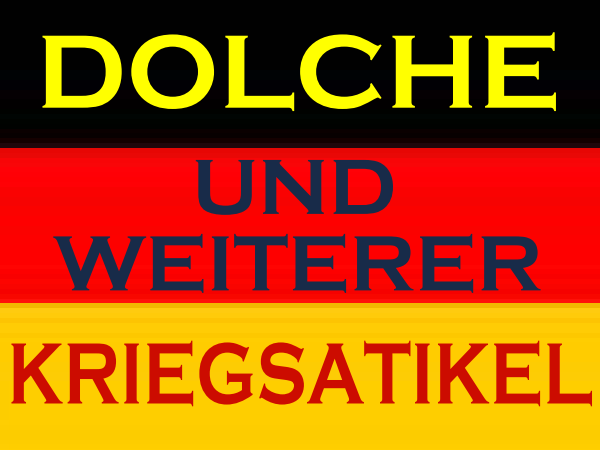  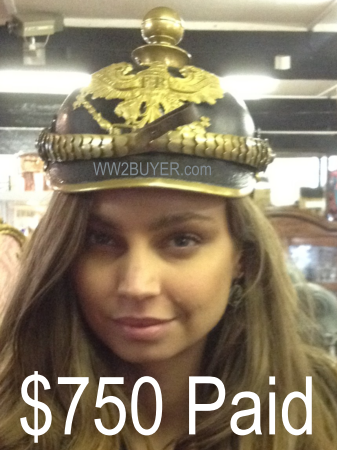  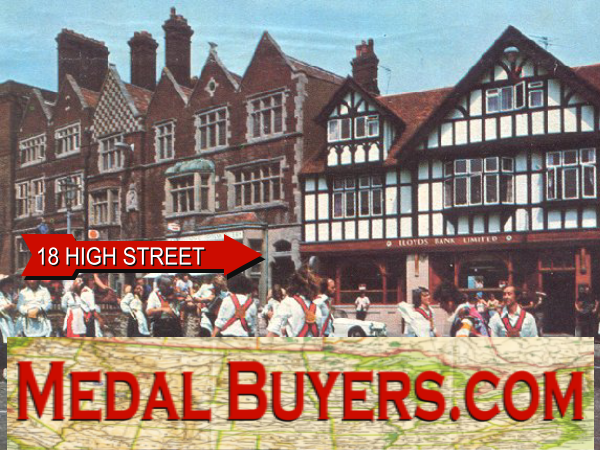 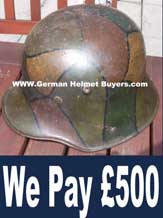          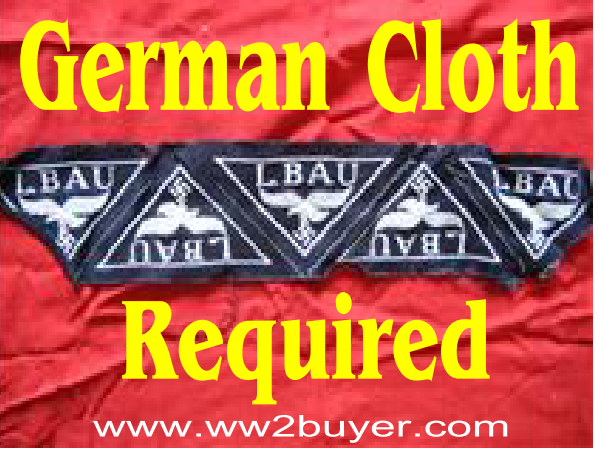 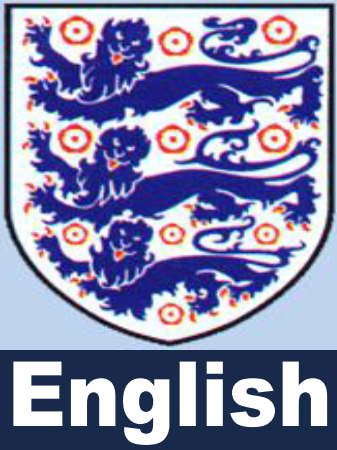                                     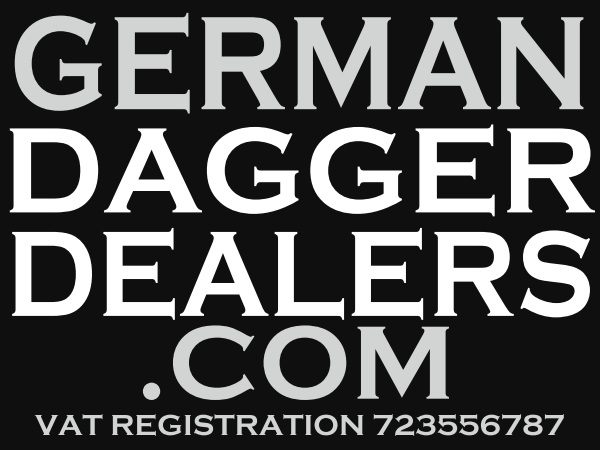 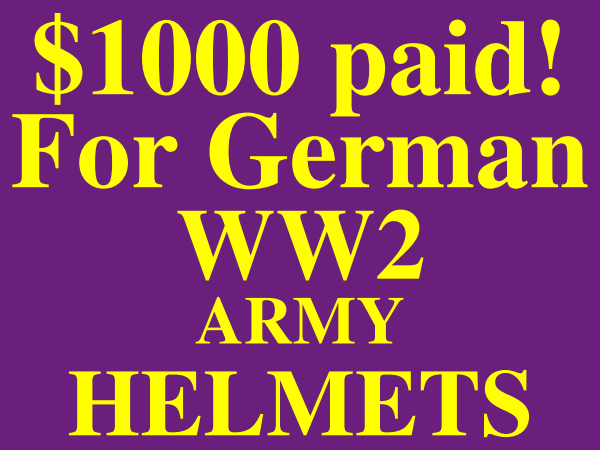 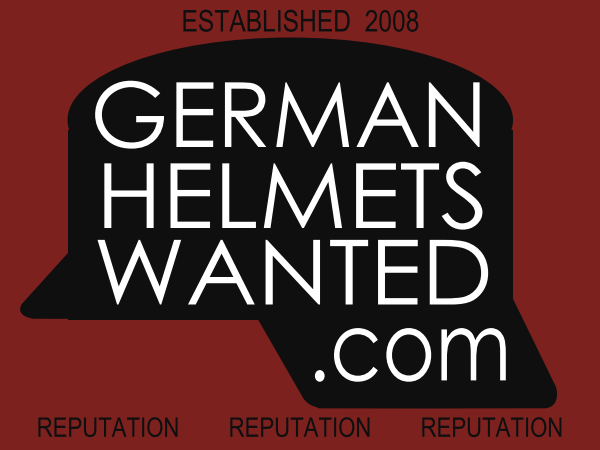 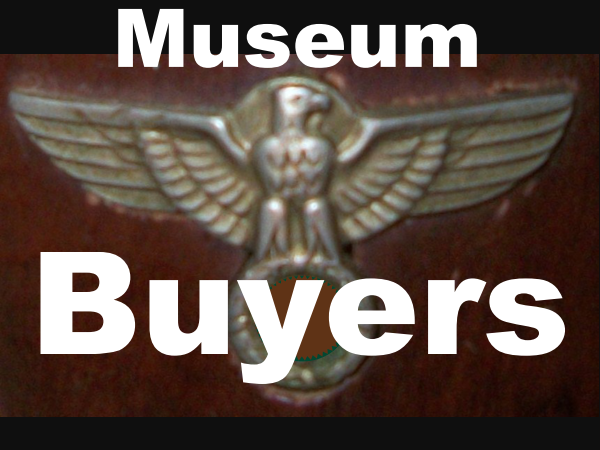 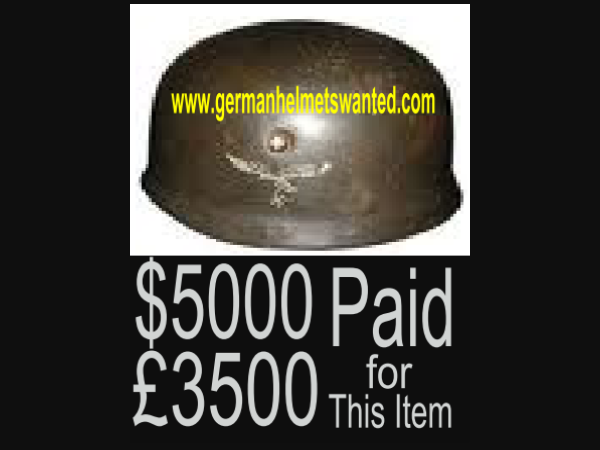 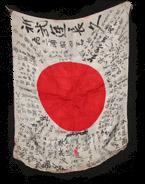 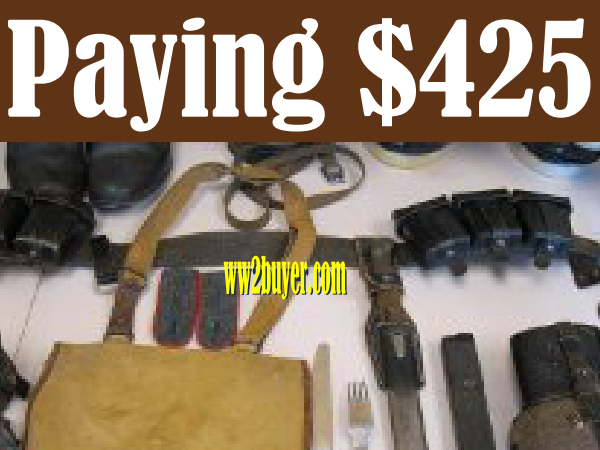  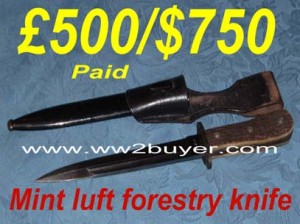 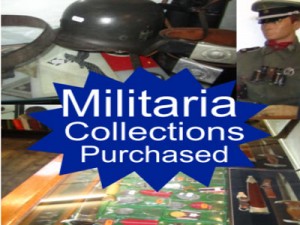 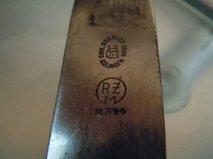 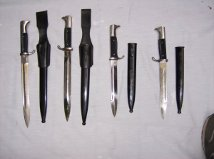 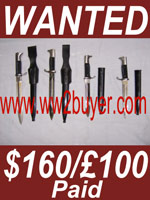 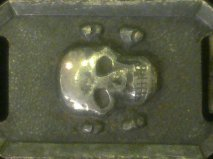 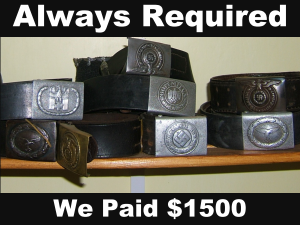   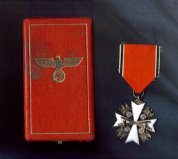 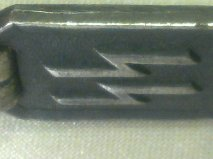  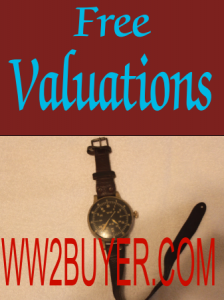  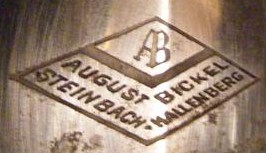  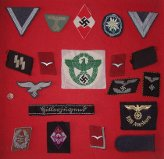 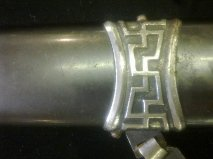 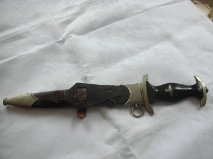 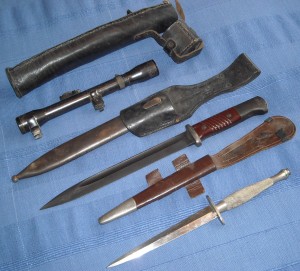 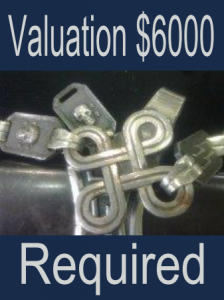 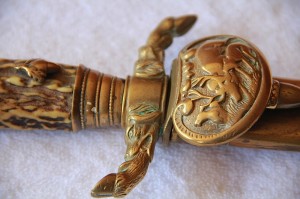 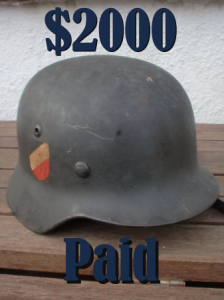 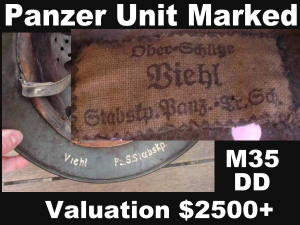  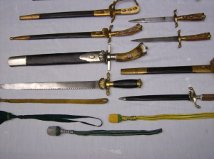 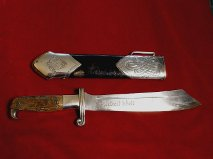 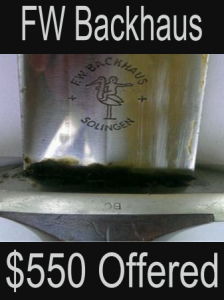 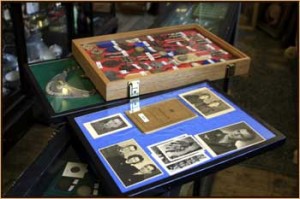  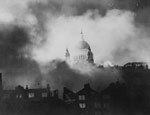 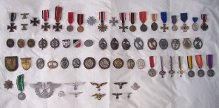 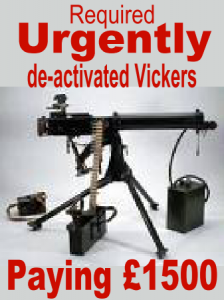         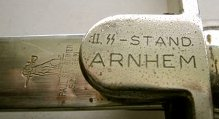 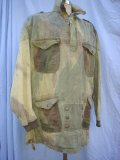 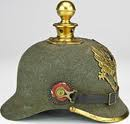 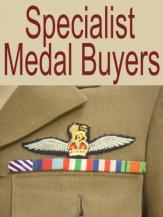 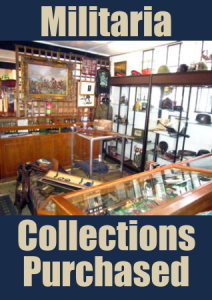  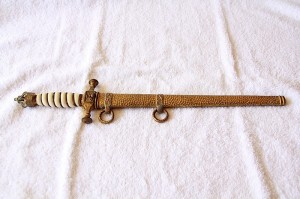   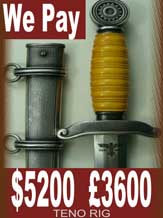  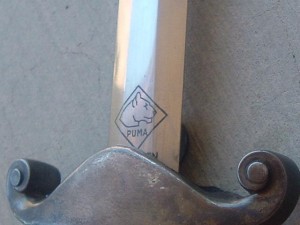 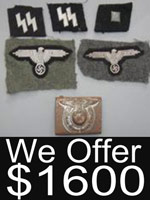 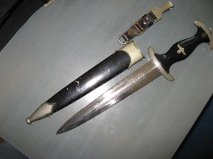 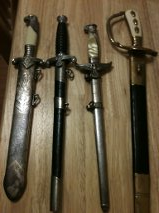 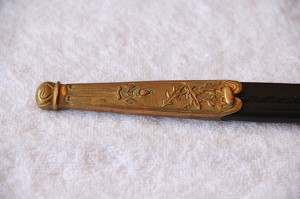 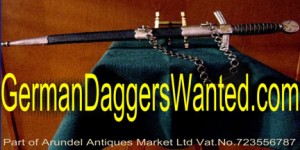 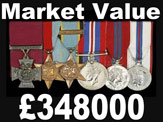 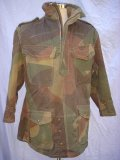 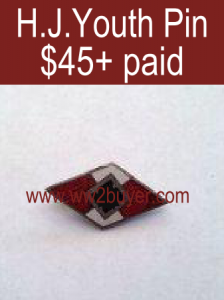 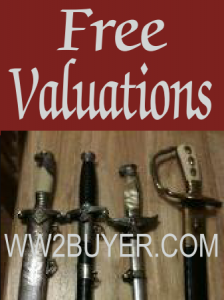 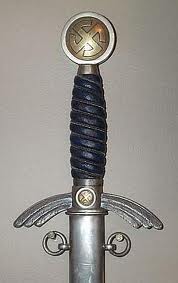 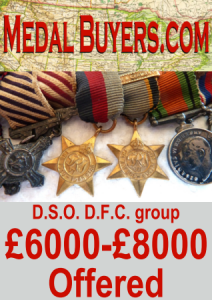                                      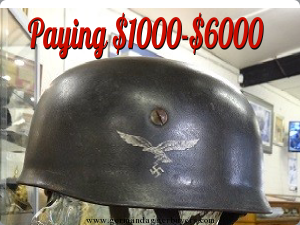 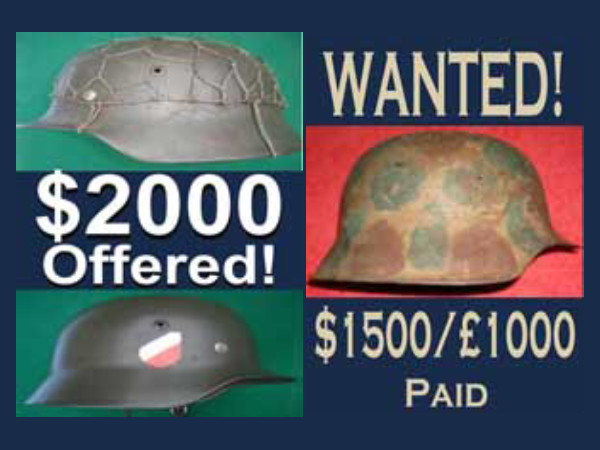 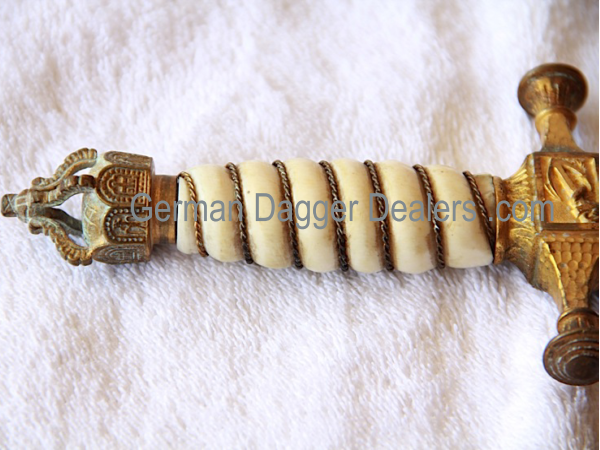 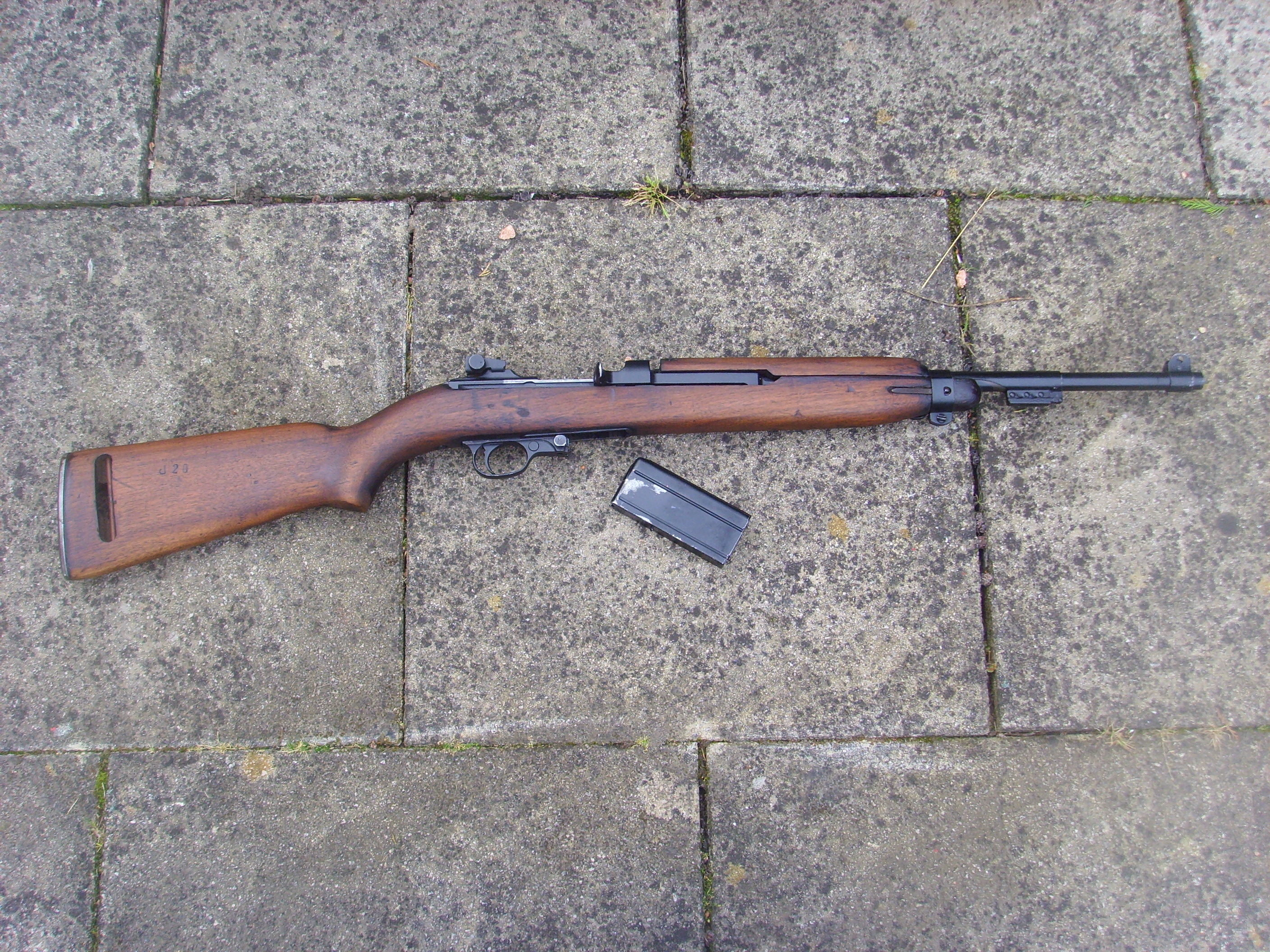 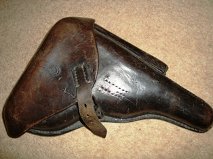 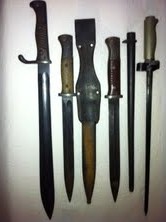 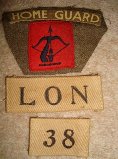 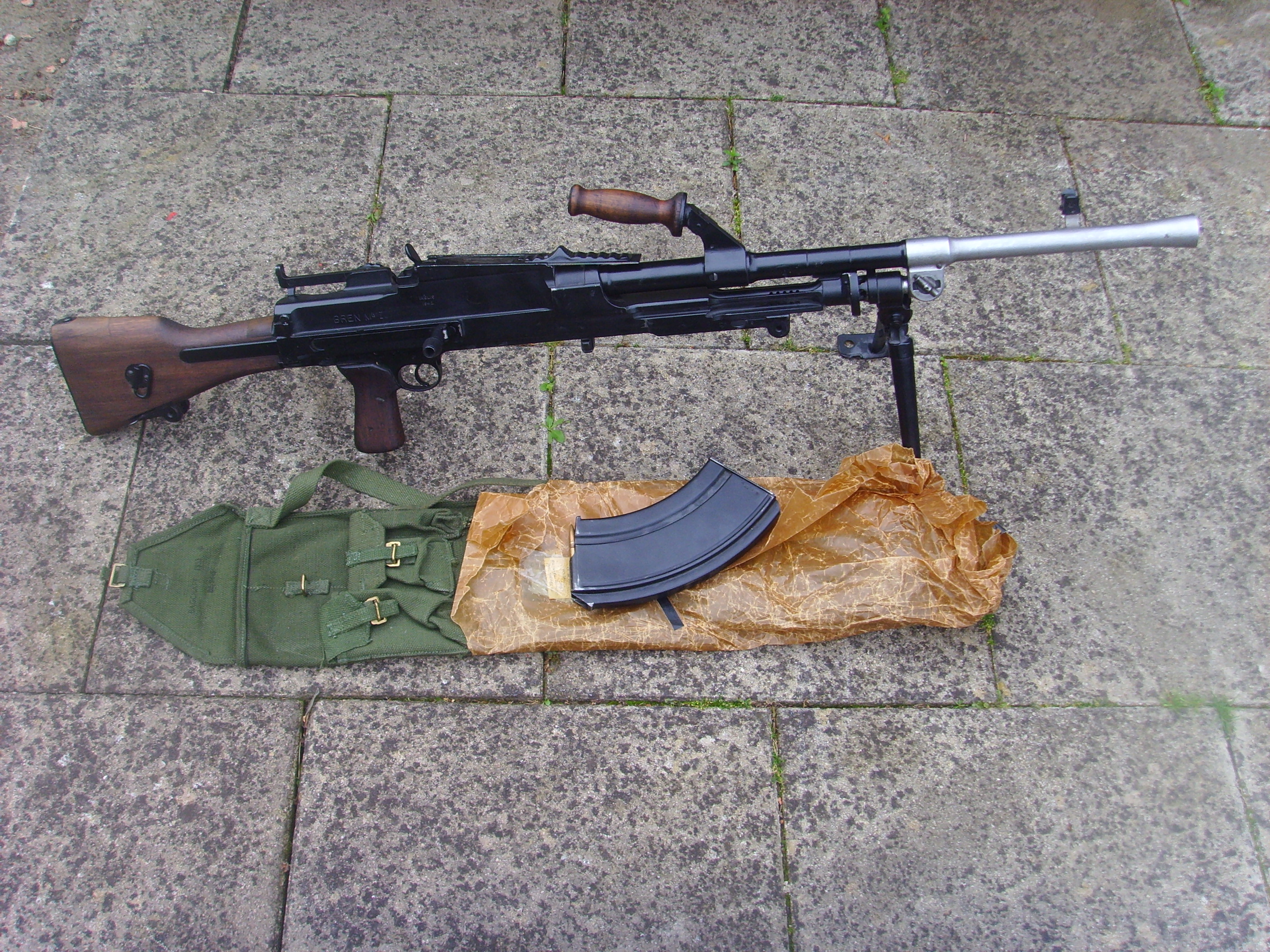 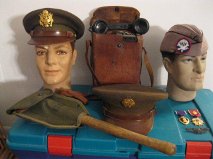 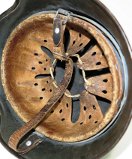 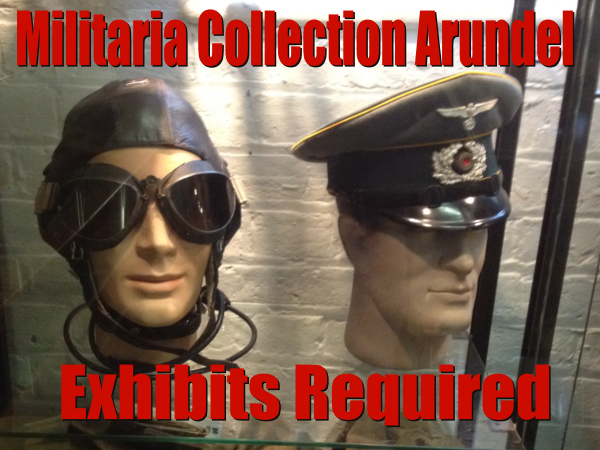 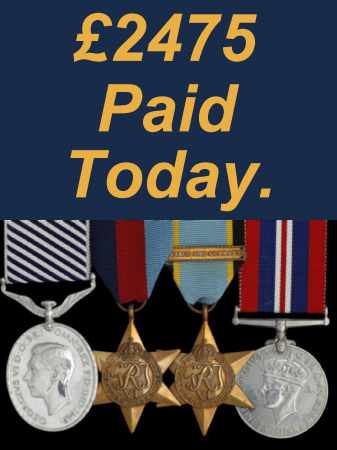 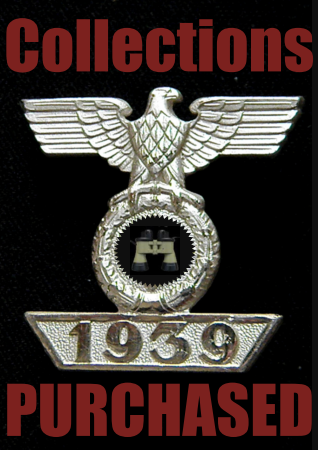 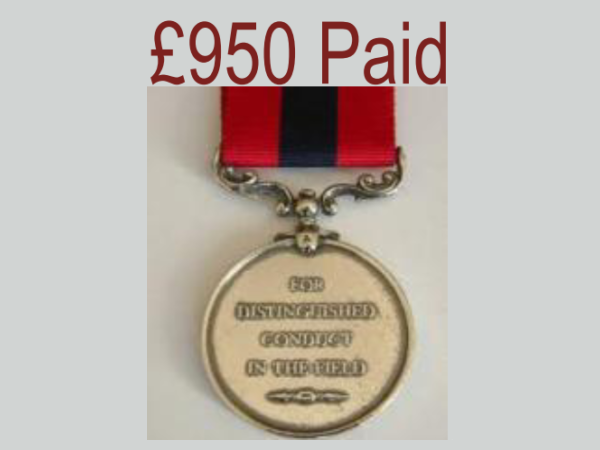 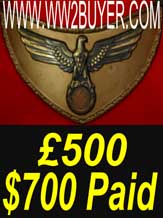 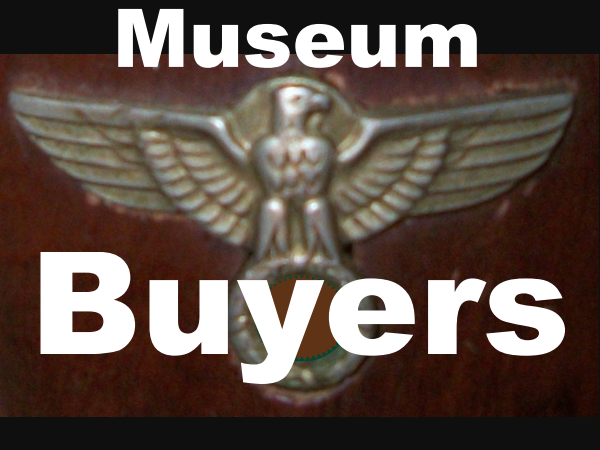 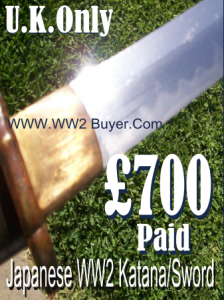

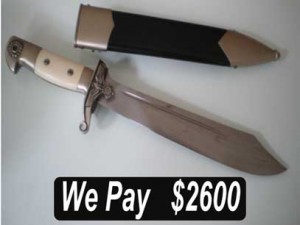  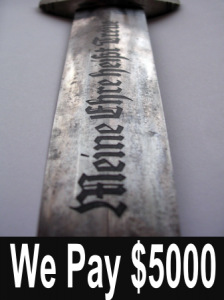   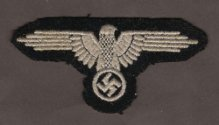                 
 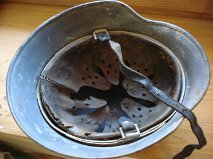 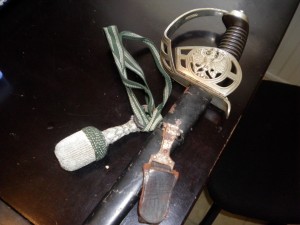 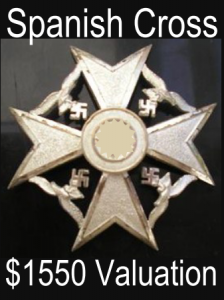 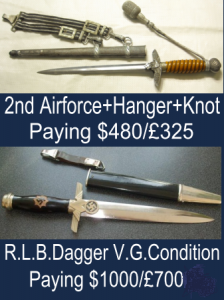  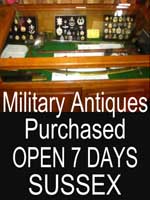 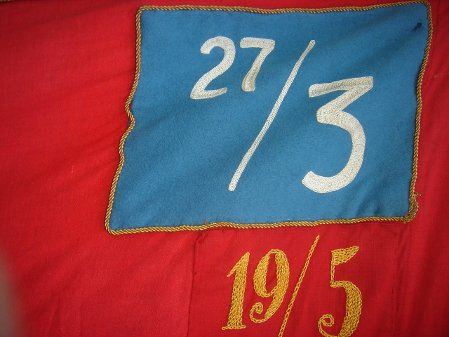   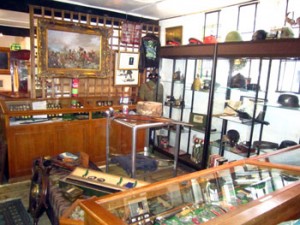                 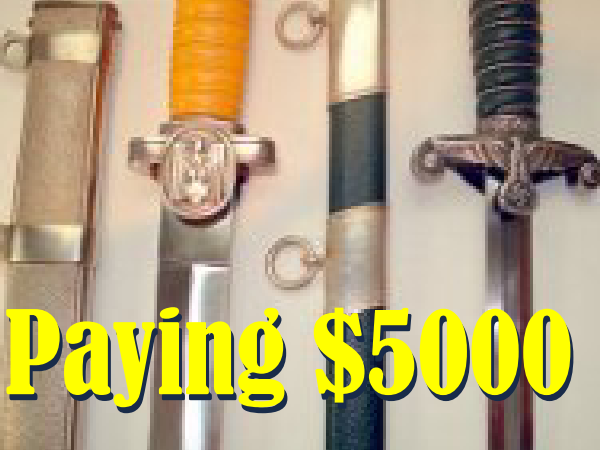 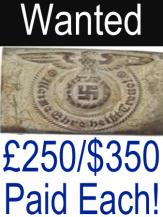 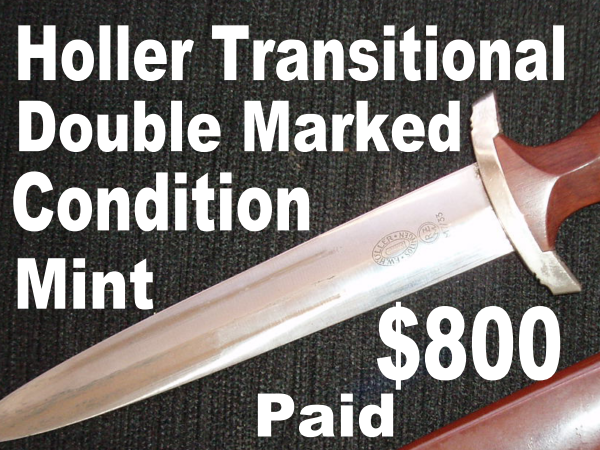                 
 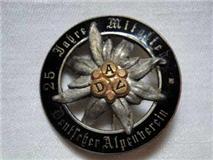 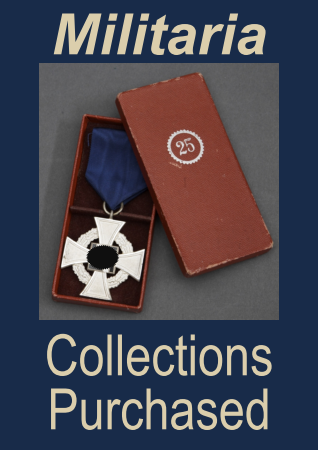 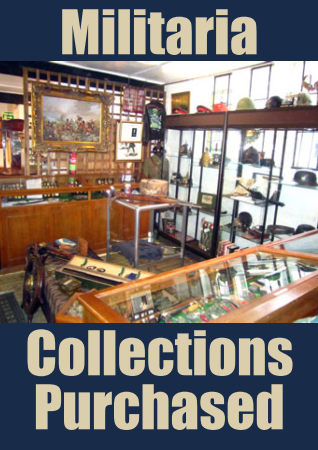 ![<SAMSUNG DIGITAL CAMERA>” alt=”” src=”http://www.medalbuyers.com/wp-content/uploads/2012/09/medal-dealers-sussex-6.jpg”></span></a><a href=]() 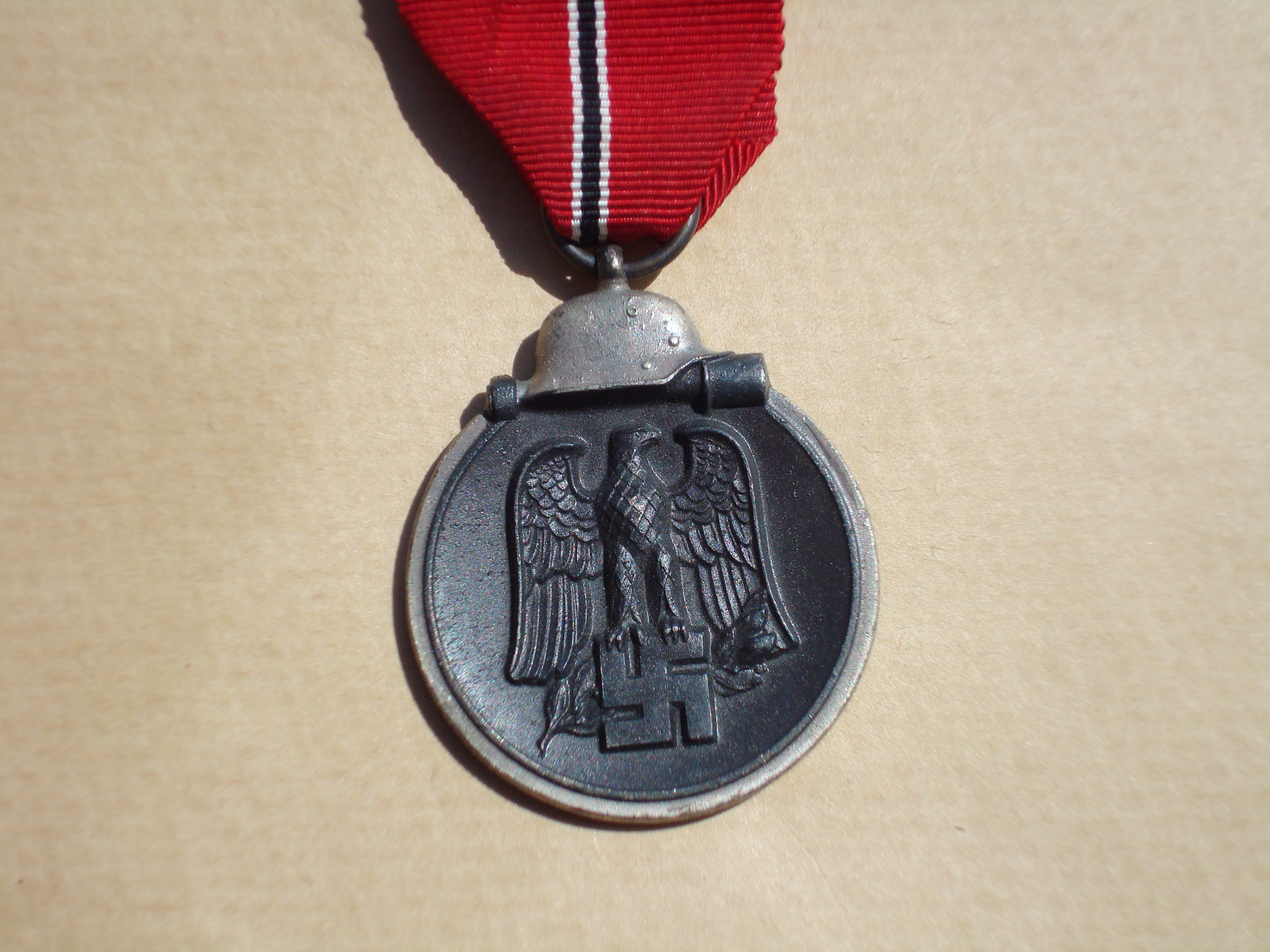 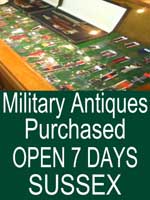 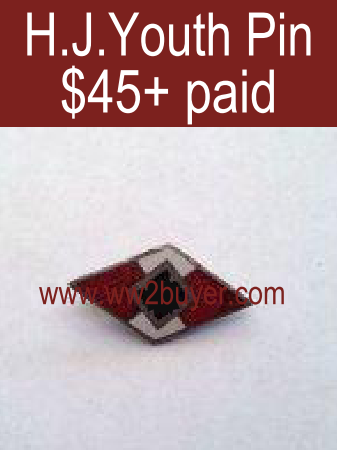 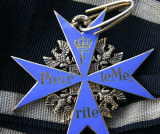 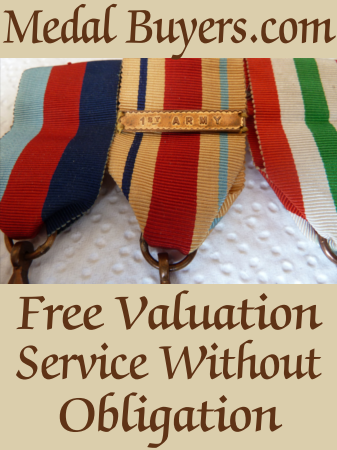 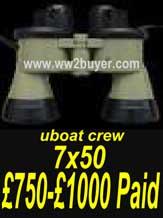 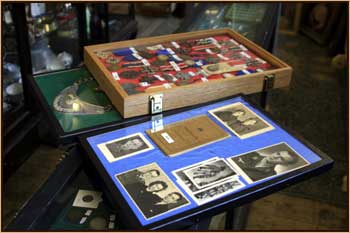 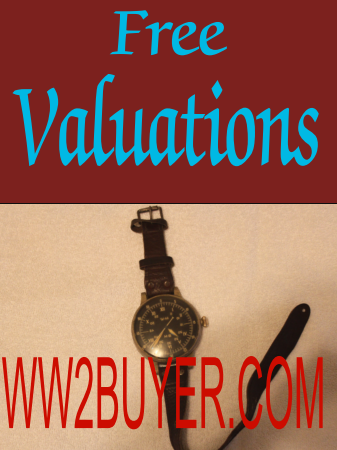 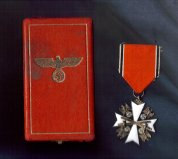 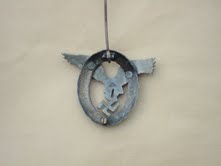 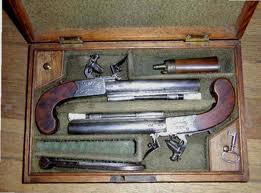 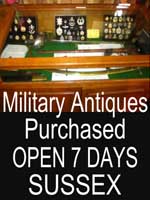 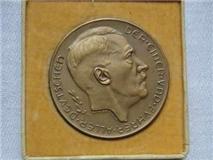 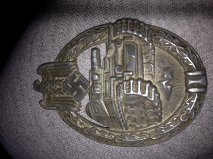 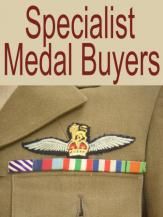 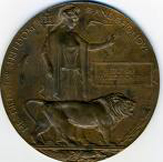 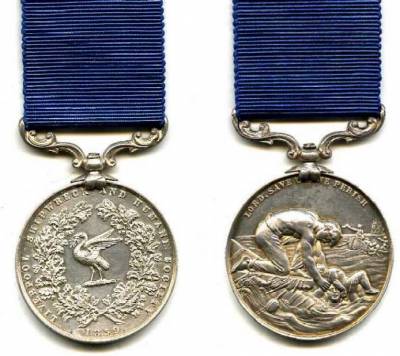 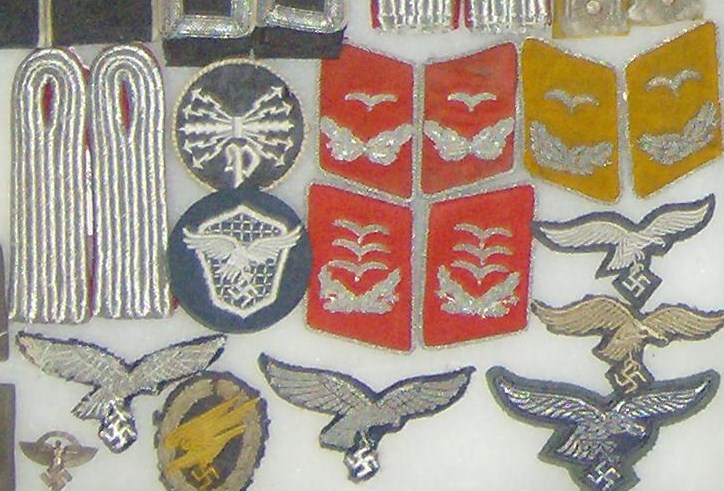 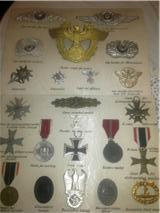 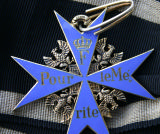 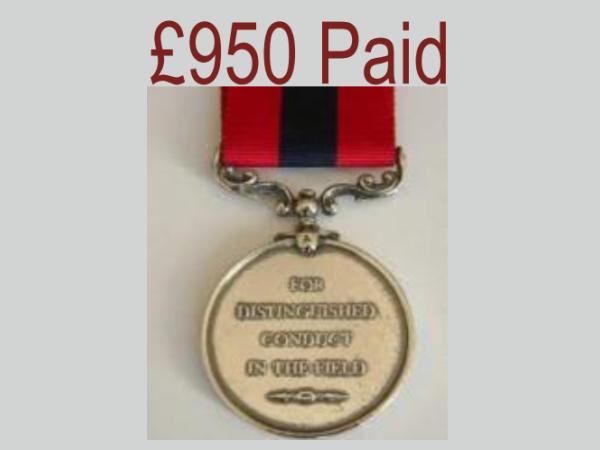
GermanDaggerSellers.com considers the open display of Nazi symbols outside of a balanced historical collection to be both irresponsible and offensive. Our Payment Policy is straightforward: Sellers receive immediate “PayPal” payment for items. We pay any duty on goods arriving from overseas cover all shipping costs.
Safe Selling of daggers on-line
Safe Selling of militaria on-line
Obtain several opinions before selling!
Insist on pre-payment!
Do not sell edged weapons to minors
or to those who are happy to do so!
Ask for a VAT registration number.
Request an image of the buyer
in their store/ offices.
Use google earth to look at thier store?
GermanDaggerSellers.com
Arundel Ant Market
18 High Street
Arundel
West Sussex
BN18-9AB
ENGLAND
Emails should be directed to
bunnter@hotmail.co.uk
Best regards Mr Bunnter
(David)
What is an S.A.Dagger?
(Written by David )
The S.A.Dagger was primarily a symbol
of authority for Hitler’s Sturmabteilung
(SA) (Storm Detachment)
Formed in 1921 The S.A.or “Brown Shirts” were a thuggish street army raised primarily to fight communist party supporters during political demonstrations. The S.A. grew to a membership of 3,000,000 men by the late 1930’s. Huge quantities of daggers were produced to accommodate this political army and in so doing revitalized the ailing Solingen cutlers. The weapon takes the form of a Gothic dagger similar in design to one featured in a painting by Hans Holbein. These “Holbein Daggers” were initially produced with hand-fitted nickel mounts and exotic fruit wood grips The steel scabbards. had a lacquered brown anodized finish, The blade was etched with the SA motto, Alles für Deutschland. Examples made prior to 1935 were stamped with the German sector of the SA group on reverse lower cross guard. Later examples underwent standardization through the RZM ministry. These pieces were produced utilizing cheaper plated zinc-based fittings and scabbards were brown spray painted. Non Ferrous metals were reserved for the armaments build up.
Prior to his “unmasking” as a traitor?, Ernst Röhm was the leader of the SA. In 1934, he distributed approximately 100,000 SA daggers with his personal inscription on the reverse blade (Interestingly SS Daggers with the same inscription were issued). These daggers were to honor individuals who had served with the SA prior to December, 1931. Other than the inscription, these pieces were identical to the standard M 1933 SA dagger. After the Röhm purge an order to remove all inscriptions that bore his name was given. Many examples were returned to the factory for grinding. Others had the defecation erased in the field by whatever means were available. Examples will occasionally be encountered with remnants of the original inscription on the blade. Some blades exist with an intact inscription, reflecting only the removal of the Röhm signature. Very rarely is an example seen with a full, untouched inscription, as the holder would have risked a charge of treason.
The Government Officials dagger.

The Government Officials dagger came into being in March 1939. The principle manufacturers being Carl Eickhorn and Alcosso. It was carried by officer level civil servants who were attached to Ministries and ranking staff of the foreign office.
The dagger is almost identical in appearance to the Diplomatic dagger with only one exception. The beak of the eagle faces to the viewers left, whilst on the Diplomatic daggers the eagle’s beak points to the right.
The bold hanging straps are of grey – blue brocade having velvet backing aluminium facings and grey – blue edge strips. The buckles are rectangular having oak leaf decoration.
Officially a small sized silver knot is hung tied from the feral above the cross guard .Standard Army knots are however frequently encountered.
By 1942 production had ended .
Edited By David Mattey
|
NPEA Daggers Required
$2000-$3000 now being Paid
“Mehr sein als scheinen.”
      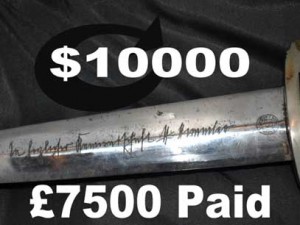 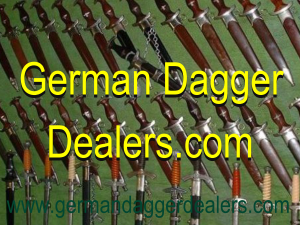 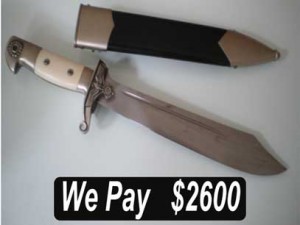 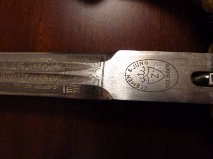 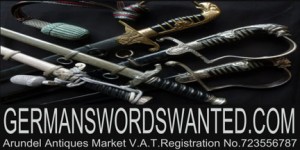 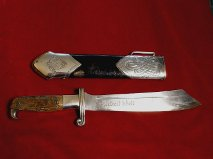 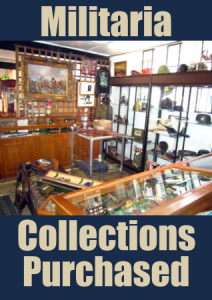 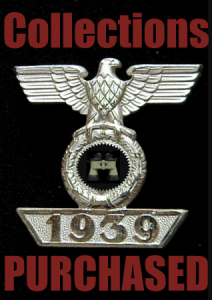 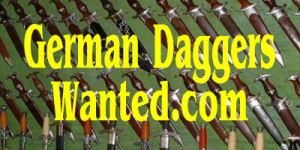 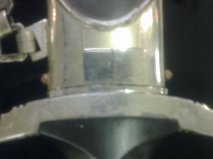 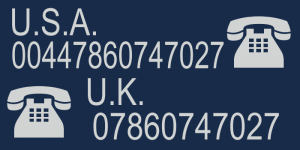 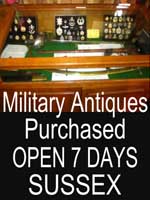 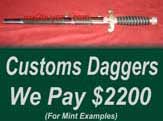  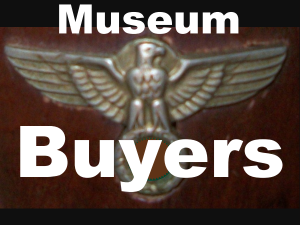 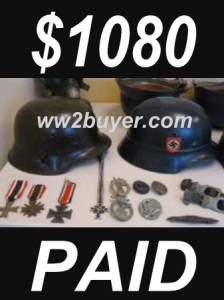 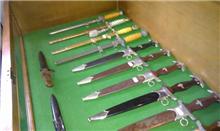 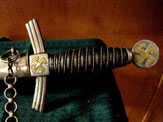  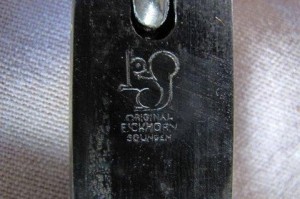 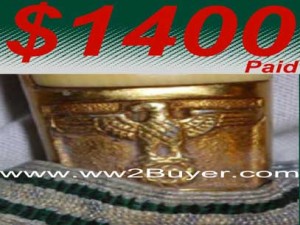 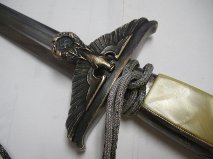 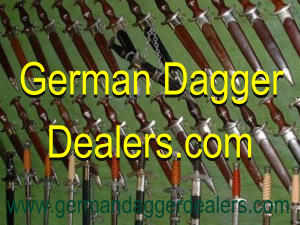
|
|
Notes on The First Model Luftwaffe Dagger
(Written By David Mattey)
Adopted in 1935 the wearing of the first pattern Luftwaffe Dagger was initially confined to pilot officers. Regulations were relaxed allowing n.c.o.s and higher ranks from all branches ot the service to wear the model. Manufacturers include Weyersburg, Alcoso, WKC, Klaas, EP&S, Herder, SMF, Tiger, Puma, Eickhorn,Gebr Heller, and Clemens & Jung. .
|
The fittings found on early models are of silver plated cast nickel with bronze swastica roundel inserts
Mid period models are found with zinc cast fittings and steel scabbard mounts
.later production fittings were fashioned in aluminum. perhaps to reflect the spirit of aircraft production? Some makers. Genuine examples that mix chains and fittings from different periods do exist.
Blades were usually plain in design with a silver plated finnish..These can be found with of without a trade mark Etched examples should be viewed with great caution. ,.The Scabbard shell was constructed of pressed steel with a fine blue Morocco leather covering. The spiral knopped grips were covered to match then adorned with twisted wires of various metal types.
The overall length is 48cm (18.9 inches).(First production scabbards have no shell and are characterised by wide staples securing the mounts.Makers found with D.L.V. type scabbards include Carl Eickhon and Gabriel Heller.
History of the R.A.D Hewer
Instituted in 1934 the R.A.D.Hewer was robustly crafted to serve as both a working hatchet and to be worn as an emblem of authority on formal occasions. Paul Casburg based his design for the hewer on an antique woodman’s hatchet.
These Antler griped Hewers measured forty cms overall .They had carbon steel blades etched with the RAD moto”Arbeit Adelt” (“Work Ennobles”) The scabbards were steel shells mounted with silvered nickel then later steel and alloy fittings. Celtic knot designs and a swastika within a spade flanked by ears of corn were impressed into the fittings. Fittings to the scabbard were toned with black shellac,oil glaze or cellulose paint ,polished back, then lacquered to achieve an “antiqued” appearence.
The antler grip plates on early production Hewers retain the raw texture whilst later examples tend to have a smoother finish. A Scarce variation is the “Full Stag” in this early variation of theHewer the handle lacks the metal ends to the pommel. They are instead covered by Antler. The Hewer was affixed to the Enlisted Mans belt by a large leather hanger, variations of hangers exist as well as non regulation examples.
Hewers were locally issued at battalion bases and was not available for private purchase .The RAD’s triangular proof mark is seen above the makers mark on hewers produced before 1936 production of the Hewer had finished by late 1942.
|
Background information
on the German Army (Heer) Dagger
(Written by David)
The German army dagger came into being in 1935. It was an element of dress that enabled rank to be identified and was less cumbersome to wear than swords which became confined to wear on state occasions or on the parade ground. The design, as with many daggers of the period was by Paul Casburg .
Army Dagger Grips
The grip took a tubular form having concentric spiral grooves lacking the adornment of grip wire to be seen on other models. The early grips were molded in solid polymer compounds in various colors. Ivory grips were available at extra cost. By 1939 production techniques changed .Grips were cast in plaster over a wood former then dipped in “Trollon” to achieve a
White plastic coated finnish
Army Dagger Cross Guard & Pommel
Initially crossguards were cast from brass, skillfully chilled, silver plated ,toned,polished then lacquered. Over time these later gave way to cheaply produced castings culminating in the use of a dull grey zinc.
The obverse cross guard design depicted an eagle with outstretched wings holding a swastika within a wreath.The pommel which also acted as the securing nut tapered in from the top downward decorated all the way around with upstanding oak leaves rising from the grip to the pommel top.
Army Dagger Blades
The Army dagger blades were generally plain in design and around 26 cm in length. Some manufacturers plated blades however they are more frequently encountered with a horizontal “Cross Grain” Finnish. Etched presentation blades as well as Damascus steel examples are not unknown however such exotica should be viewed with caution by todays collectors.
Army Dagger Scabbards
The first 1935 Army dagger’s had heavy silver plating applied to the”pebble” decorated brass scabbard shells .From 1936 scabbards were produced in steel some with a nickel finish and late issues with the gray oxide finish.Fitted to the scabbard were two hanger suspension rings with oak leaf patterns onto which the hanging straps was clipped.
Hanging Straps & Knot
Army Daggers were worn suspended on two hanger straps, united by a belt clip at the top. The silver braid faced straps were backed with field grey velvet . Oval buckles with oak leaf patterns and matching silvered slides.
A Silver 42-43 cm Knot or Portapee was worn tied around the dagger grip .
Army dagger production had ceased by mid 1943.
|
|
|
We Are U.K. Based Buyers Specializing
In The Following German Daggers

    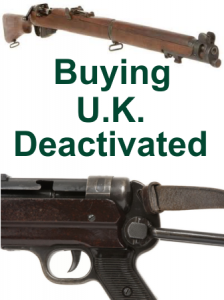             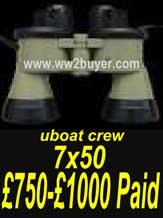            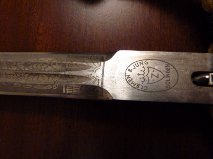          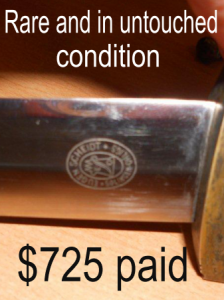  
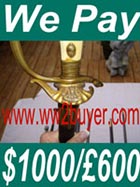 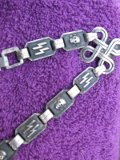                   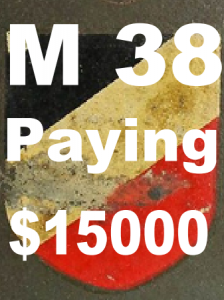 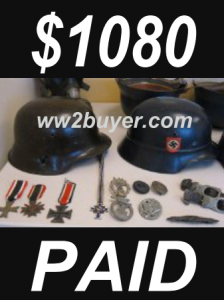 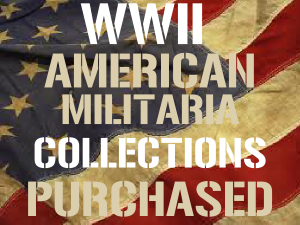 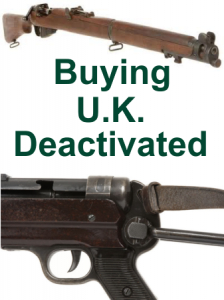 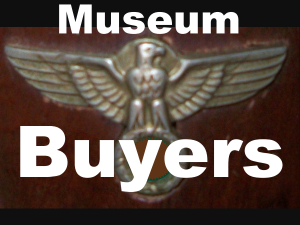 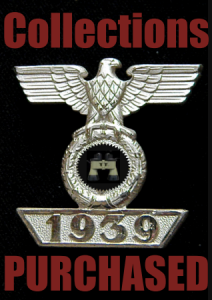 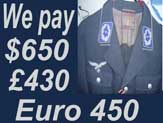 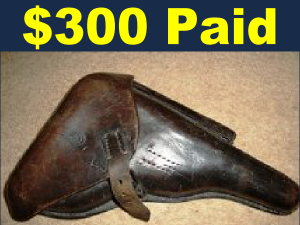 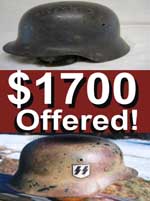  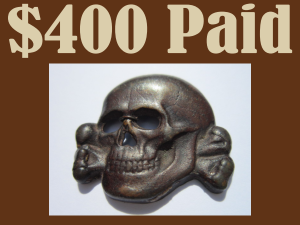 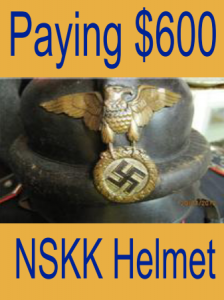 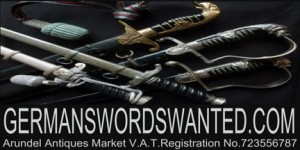 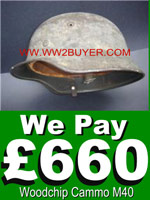 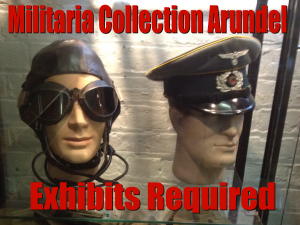 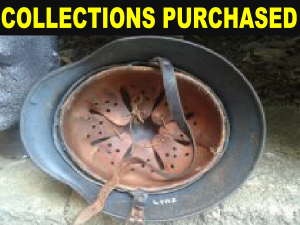 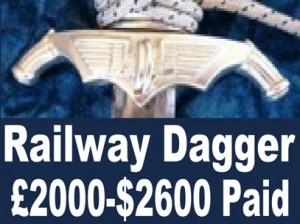 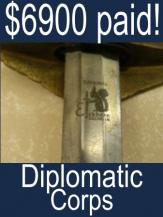 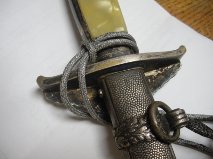 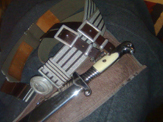
|
The prices below pre paid during 2012 for fine examples suitable for museum collections.
|
1933 & 1936 SS daggers
|
U.S. $3500-$7000
U.K. £2500-£5000
|
NSKK(National Socialist Motor Corps) daggers1933&1936 Daggers
|
U.S. $500-$4000
U.K. £280-£3000
|
NPEA (National Political
Educational Institute) daggers
|
U.S. $3000-$6000
U.K. £2000-$4000
|
1933 SA (Storm Troops) daggers
|
U.S. $280 -$750
U.K. £250-£600
|
Heer (German Army)
Officer daggers
|
U.S. $250-$700
U.K. £180-£600
|
DLV (German Air Sports Formation) Flyers Knives
|
U.S. $700-$900
U.K. £450-£650
|
NSFK (National Socialist Flying Corps) Flyers knives
|
U.S $700-$900
U.K. £450 -£650
|
Luftwaffe (German Airforce) daggers and Gravity Knives
|
U.S. $300-$875
U.K. $180-$675
|
German Navy daggers
|
U.S. $300-$700
U.K. £280-£800
|
RAD (Reichs Labor Service) daggers
|
U.S. $600-$1100
U.K. £480 – £1700
|
Diplomatic/Government
Official daggers
|
U.S. $6000-$9000
U.K. £4000- £6500
|
Red Cross/Social/Welfare
Official daggers
|
U.S. $400-$1200
U.K. £300-£900
|
German Fire Official daggers,
Saw Back adds 30%
|
U.S. $100 -$200
U.K. £75-£160
|
RLB (Reichs Air Protection Federation) daggers
|
U.S. $1600-$2600
U.K. £700 -£2000
|
TENO (Technical Emergency Corps) daggers
|
U.S. $3400-$6000
U.K. £2000 – £5000
|
German Custom Official daggers
|
U.S. $2200-$5000
U.K. £1600-£7000
|
German Railway Official daggers
|
U.S. $3500-$4500
U.K. £2800-£4700
|
Postshutze
(Postal officials daggers)
|
U.S. $4000-$6000
U.K. £2200-£4000
|
Forestry, Hunting, and Rifle Association daggers
|
U.S. $1200-$1800
U.K. £700-£1200
|
HJ (Hitler Youth)/DJ
(German Youth)
|
U.S. $150-$550
U.K £100-£325
£4000/$6000 for Leaders
|
If You wish to sell any of the above, contact us
bunnter@hotmail.co.uk
Or telephone Our High Street Shop on 07860-747027
|
German Dagger Sellers.com.
Market Assessment of German Dagger value trends 2012
|
| Dagger Type |
Value |
Dagger Type |
Value |
| SA 1933 EM(Value Down) |
U.S $550U.K £350 |
Teno EM Hewer(Value hovering) |
£1,900 |
| |
|
Teno Officer + |
£3,400 |
| SA Honor + |
£52,000 |
Forestry |
£900 |
| SA High Leader |
£25,000 |
Hunting Official – |
£1,300 |
| SA Rohm EM – |
£3800 |
Rifle Association |
£1,500 |
| SA Rohm Chained |
£5,000 |
Hitler Youth Knife |
£400 |
| feldenhaller +(Value Up) |
£55,000 |
Hitler Youth Leader |
£3,500 |
| NSKK 1933 EM(Value Down) |
U.S.550U.K.£350 |
HD |
£400 |
| NSKK 1936 Chained Dagger – |
£3,800 |
Land Customs + |
£1,700 |
| NSK High Leader + |
£32,000 |
Sea Customs + |
£5,500 |
| SS 33 EM Dagger+ |
£2,600 |
Water Protection |
£3,500 |
| SS 1936 Chained Dagger |
£5,000 |
Postal Protection + |
£2,900 |
| SS High Leader – |
£57,000 |
Postal Leader |
£3,500 |
| SS Honor + |
£52,000 |
NPEA student |
£2,000 |
| Luftwaffe 1(Value Hovering) |
U.S.$700 U.K£550 |
NPEA Leader |
£6,000 |
| Luftwaffe 2 –(Value Down) |
U.S.$450U.K.£200 |
NPEA Chained |
£6,000 |
| Navy 1 |
£900 |
RAD EM + |
£650 |
| Navy 2(Value Down) |
U.S.$600U.K£450 |
RAD Leader – |
£1800 |
| Army Dagger –(Value Down) |
U.S.$400U.K£220 |
DRK EM |
£450 |
| Army Engraved Dagger + |
£1,600 |
DRK /Social Welfare Leader |
£1,200 |
| DLV knife – |
£900 |
RLB EM 1st model |
£900 |
| DLV/Luft1 transitional+ |
£2,400 |
RLB EM 2nd model |
£800 |
| NSFK knife |
£900 |
RLB Officer 1st model |
£1,500 |
| NSFK Dagger |
£1,800 |
RLB Officer 2nd model |
£1,500 |
| 1st Railway- |
£1,500 |
Government Official |
£4800 |
| 2nd Railway – |
£3,700 |
Diplomatic Officer |
£7,000 |
| Fire Official |
£800 |
|
|
Valuation Table above relates to examples of daggers
deemed to be in better than average condition.
Scarce trademarks increase the value by 10%.
Hanging Straps and Knots can affect prices by 35%. |
German Dagger Sellers.COM WE REQUIRE PIECES BEARING THE FOLLOWING CODES AND MANUFACTURERS NAMES
| M7/1 |
Gebrüder Christians, Christianswerk, Solingen |
| M7/2 |
Emil Voos Waffenfabrik, Solingen |
| M7/3 |
Kuno Ritter, Solingen-Grafrath |
| M7/4 |
August Müller KG., Solingen-Merscheid |
| M7/5 |
Carl Julius Krebs, Solingen |
| M7/6 |
H. & F. Lauterjung, Solingen |
| M7/7 |
Hermann Konejung, Solingen |
| M7/8 |
Eduard Gembruch, Solingen-Grafrath |
| M7/9 |
SMF – Solinger Metallwaffenfabrik Stoecker & Co., Solingen |
| M7/10 |
J. A. Henckels, Solingen |
| M7/11 |
E. Knecht & Co., Solingen |
| M7/12 |
WMW – Waffenfabrik Max Weyersberg, Solingen |
| M7/12 |
Carl Robert Kaldenbach (duplicate) |
| M7/13 |
Arthur Schüttelhofer & Co., Solingen-Wald |
| M7/14 |
PDL P. D. Luneschloss, Solingen |
| M7/15 |
Carl & Robert Linder, Solingen |
| M7/16 |
Justus Brenger & Co., Solingen-Wald |
| M7/17 |
A. Werth, Solingen |
| M7/18 |
Richard Abr. Herder, Solingen |
| M7/19 |
Ed Wüsthof Dreizackwerk, Solingen |
| M7/20 |
Ernst Mandewirth, Solingen |
| M7/21 |
Hermann Schneider, Solingen |
| M7/22 |
Wilhelm Weltersbach, Solingen |
| M7/23 |
Carl Halbach, Solingen |
| M7/24 |
Reinhard Weyersberg, Solingen |
| M7/25 |
Wilhelm Wagner, Solingen-Merscheid |
| M7/25 |
Jostes & Co., Solingen (duplicate) |
| M7/26 |
Carl August Meis, G.m.b.H., Solingen |
| M7/27 |
Pumawerk (Lauterjung & Sohn), Solingen |
| M7/28 |
Gustav Felix, Gloriawerk, Solingen |
| M7/29 |
Klittermann & Moog G.m.b.H., Haan |
| M7/29 |
Jacobs & Co. (duplicate) |
| M7/30 |
Gebrüder Grafrath, Solingen-Widden |
| M7/31 |
August Merten Mw., Solingen-Grafrath |
| M7/32 |
Robt. Muller, Solingen-Merscheid |
| M7/33 |
F W. Höller, Solingen |
| M7/33 |
P.u.A. Duenzer, Solingen (duplicate) |
| M7/34 |
Rudolf C. Jacobs, Solingen-Grafrath |
| M7/35 |
Wilhelm Halback, Solingen |
| M7/36 |
E. & F. Hörster, Solingen |
| M7/37 |
Robert Klaas, Solingen-Ohligs |
| M7/38 |
Paul Seilheimer, Solingen |
| M7/39 |
Franz Steinhoff, Solingen-Wald |
| M7/40 |
Hartkopf & Co., Solingen |
| M7/41 |
Rudolf Schmidt, Solingen |
| M7/42 |
W.K.C. (Weyersberg, Kirschbaum & Co.) Waffenfabrik, Solingen-Wald |
| M7/43 |
Paul Weyersberg & Co., Solingen |
| M7/44 |
F. W. Backhaus, Solingen-Obligs |
| M7/45 |
Karl Bocker, Solingen |
| M7/45 |
Ottersbach & Co., Solingen (duplicate) |
| M7/46 |
Emil Gierling, Solingen |
| M7/47 |
Paul Ebel, Solingen |
| M7/48 |
Otto Simon, Steinbach |
| M7/49 |
Friedrich Herder A.S., Solingen |
| M7/50 |
Gebrüder Heller, G.m.b.H., Marienthal |
| M7/51 |
Anton Wingen, Jr., Solingen |
| M7/52 |
Herbertz & Meurer, Solingen-Grafrath |
| M7/53 |
Nach. Gustav Weyersberg, Solingen |
| M7/54 |
Gottfried Müller, Rerges-Vogtei |
| M7/55 |
Robert Herder, Solingen-Ohligs |
| M7/56 |
C. D. Schaaf, Solingen |
| M7/57 |
Peter Lungstrass, Solingen-Ohligs |
| M7/58 |
Louis Perlmann, Solingen |
| M7/59 |
C. Lutters & Co., Solingen |
| M7/60 |
Gustav L. Koller, Solingen |
| M7/61 |
Carl Tillmans Sohn KG., Solingen |
| M7/62 |
Friedrich Plucker Jr, Solingen-Grafrath |
| M7/63 |
Herder & Engels, Solingen-Ohligs |
| M7/64 |
Friedr. Geigis, Solingen-Foche |
THE MARKETPLACE FOR M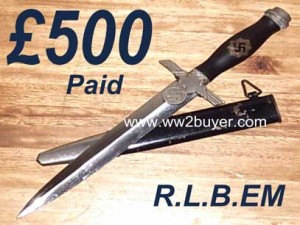 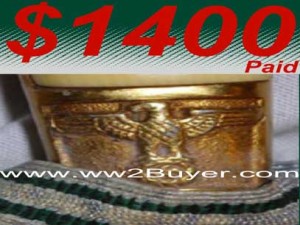 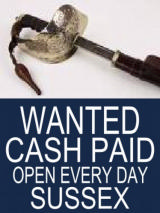 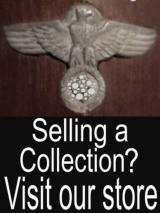  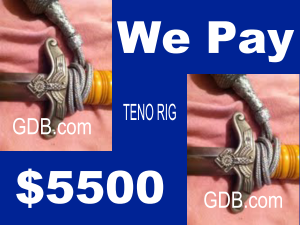
|
|
|
|
|


